The osprey have returned to the northern edge of Hoover reservoir. Osprey are brown and white birds of prey measuring two feet (61 cm) tall with a wingspan of almost six feet (183 cm). They build nests near water and feed on fish.
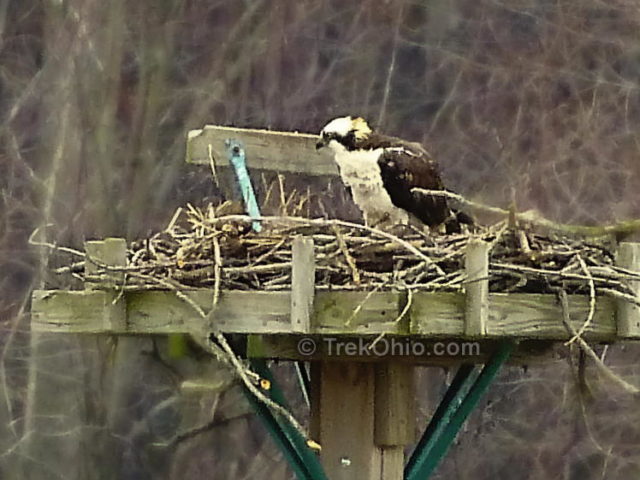
Like almost all of our other wildlife, ospreys disappeared from Ohio in the early 1900s. According to an article by John Switzer in the Columbus Dispatch the reintroduction of ospreys in modern times occurred when a breeding pair migrated into the state of their own accord in 1995. The Ohio Department of Natural Resources (ODNR) officially began an osprey reintroduction program the following year with the goal of having 70 nesting pairs in the state by 2010. Incredibly that goal was met seven years early. In central Ohio the efforts of the ODNR were complemented by the work of private citizens such as Dick Phillips and Dick Tuttle who built osprey nesting platforms in Hoover, Alum Creek and Delaware reservoirs at their own expense. So the nesting platforms you see in this post are here thanks to their initiative.
Deb met one of these individuals while visiting the Hoover Mudflats Boardwalk back in March of 2010. Although she didn’t get his name at the time, she has later come to believe that the individual must have been Dick Tuttle. He was wearing a baseball cap that said, “Osprey Observer,” and he explained that he had built or helped to build the two nesting platforms that are visible from the Hoover Mudflats Boardwalk.
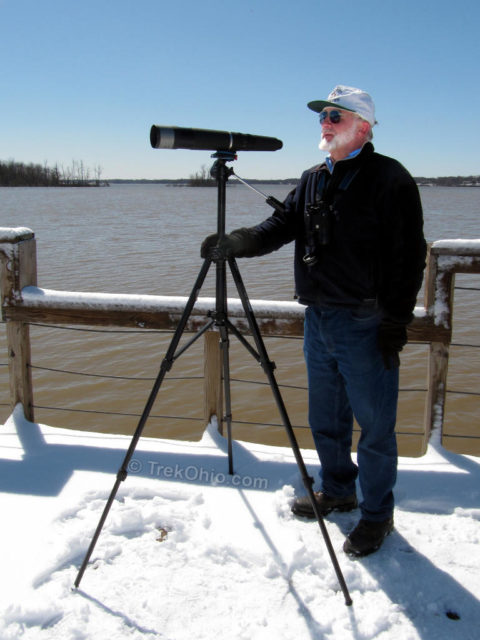
Among other things, Dick Tuttle explained to Deb why he built a perch on each platform:
- During courtship, the female may stand on the perch, and the male will land on her back and just stand there. In case any of you are getting the wrong idea, they are just getting acquainted at this point.
- When the parent on duty at the platform is being pestered too much by its youngsters, it moves up onto the perch. From there it can continue to watch over its young while at the same time having a little breathing room.
- Later when the youngsters are getting ready to fledge, their first efforts at flying are often getting up on the perch then flying back down to the platform.
In the photo below you can see the male using the perch as he spends some quality time with the little woman… except the little woman isn’t so little. Like most raptors, the male is smaller than the female.
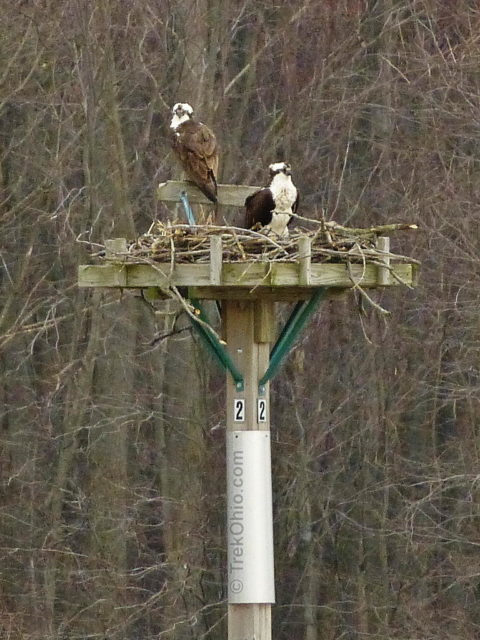
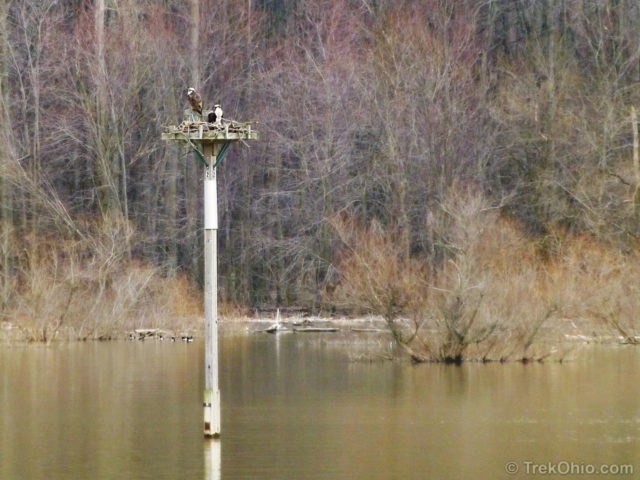
This is the platform nearest the boardwalk.
It turns out that Canada geese also like to nest on these platforms. Just to give you some idea of the dedication of these osprey volunteers, they originally guarded the platforms and would shine little laser lights on any Canada geese that seemed to have an interest in settling down there. This tended to make the geese feel uncomfortable, and they usually went on their way. I’m not sure, but I think that osprey are now so well-established in Ohio that it is no longer necessary to guard the platforms like this.
When we started visiting the boardwalk at Hoover Mudflats several years ago, a pair of osprey were nesting at the more distant platform near a small island.
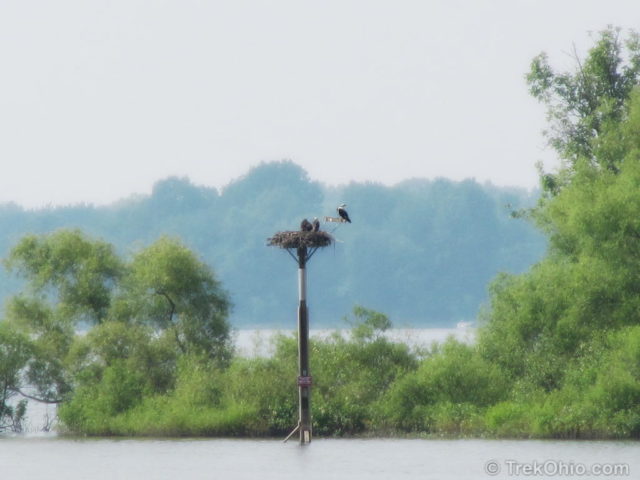
For the past two years, a pair nested at the nearer platform located in a bay between the boardwalk and the shore.
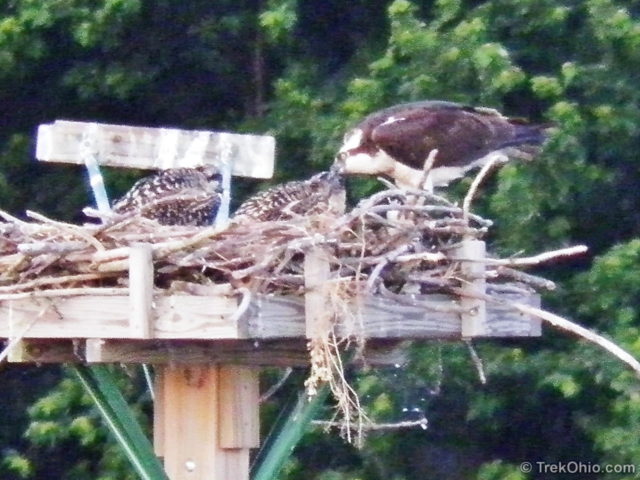
Last year we watched as the prospective osprey parents settled into their nest in March and laid eggs. They endured sleet and hail. We watched the osprey bring fish back to his mate and chase off intruders – such as a heron that got too close to the nest.
Ospreys are amazing to watch as they fish. On seeing a fish swimming near the water’s surface, the osprey plunge-dives into the water and grasps the fish with its talons. On leaving the water the osprey shakes its whole body to get the water off its feathers much in the way a dog shakes water off its fur. Although there are other species of birds that dive into water to catch a fish, the osprey is the only one that catches the fish in raptorial talons, then flies off with it. While flying the osprey usually holds the fish so the fish’s head is forward making it is more streamlined in the air. If you are interested in seeing it fish, check out the links at the end of this article; I’ve included a video.
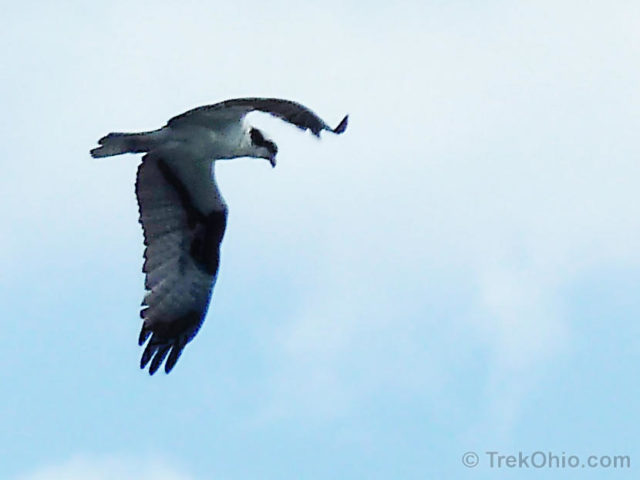
Last summer the osprey had two baby ospreys. The parents would feed them and shelter them from the elements with their wings. You could hear the youngsters chirp from the boardwalk. For that matter you could hear the adults chirp. We’ve watched as one adult seemingly calls the other one to come back so it can take a break from the platform. And when an adult rejoins the other parent at the platform, it seems to chirp as it approaches.
By late summer, one of the youngsters had learned to fly. The other had not and stayed in the nest chirping as his parents and siblings went off hunting for fish. By October, we were concerned that the osprey family would soon need to migrate south. Would they miss their window for migration or would they have to abandon the youngster? One day in early October, we saw him take off from the nest and soar off with the rest of his family. Soon the nest was empty as the family migrated south for winter.
All winter we wondered whether the osprey would return. As spring approached each week we went to the boardwalk and looked at an empty nest. This past weekend we were pleasantly surprised to see a pair of osprey in the nest. Are they the same osprey as last year? Or perhaps one of the youngsters and its mate? We don’t know – but we’re delighted to have a new family of osprey at Hoover Mudflats. And they picked the closest platform to the boardwalk, so they are easier to see. If you decide to go and view them, it helps to bring binoculars. Information on how to get there is included in the links below.
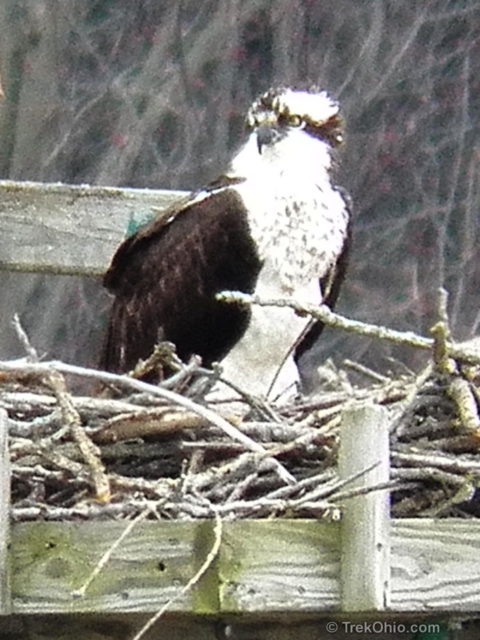
Additional information
- TrekOhio: Hoover Mudflats Boardwalk; this article explains how to get to the Hoover Mudflats Boardwalk and includes a Google Map
- TrekOhio: All articles published here about Hoover Mudflats Boardwalk
- TrekOhio: Delaware County Parks & Preserves — This is the country where Hoover Mudflats Boardwalk is located; check out this page for links to official sites and for information on nearby parks and preserves.
- YouTube: Osprey — the ultimate fisher; this video really shows off the osprey’s fishing ability; midway through the video, an osprey even demonstrates how it does the wet-doggy shake. 🙂
- Wikipedia: Osprey
- ODNR: Osprey – Pandion haliaetus
- Osprey, sandhill crane slowly return to Ohio | The Columbus Dispatch: this is a newspaper article that was published on August 30, 2009. It’s a great article that describes the process of ospreys re-populating the state and the contributions made by private citizen using their own money and efforts to build nesting platforms for them.
More on Birds
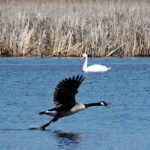
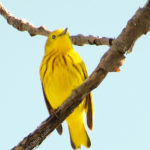
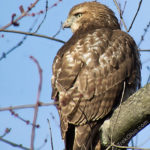
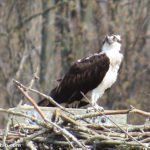
Wonderful, informative post and photos! And you know my love for the Osprey. 🙂 I’m finally back to blogging after my hiatus, I’m glad I didn’t miss this one from you both, sorry I’m so late and behind with you!
I adore these raptors — they’re just magnificent — and a huge THANKS to the gentleman builder of their nesting platforms / perches!!
It was really heartening to learn of the effort and expense that private citizens made to help these birds repopulate our state.
This is cool. Love the setting where the platform is and nice to make acquaintance with the “Osprey Observer.” Do you follow Bay photos by Donna? She writes a lot about Osprey. It makes me happy to see re-introduction of a species.Enjoyed the article.
Thanks, Jane. I am following Donna’s blog with all of her wonderful bird photos.
…. Down here in Floriduh, we are blessed with Osprey year round. They are beautiful birds – and it is amazing how big a fish they can carry while flying. I’ve seen an Osprey fly around with a large mouth bass that was easily as heavy as the bird itself. Of course, they also specialize in stealing fish from other birds – just like other eagles. Just nature at work!
The video we included in the “Additional reading” links showed an osprey carrying a fish so large I was reminded of the Monty Python skit about the “lift velocity of the fully laden swallow”. 😀
Osprey are so beautiful! I was privileged to see one flying over a lake near where I live-had no idea osprey lived in the midwest!
Very cool that you caught sight of one flying over a lake!